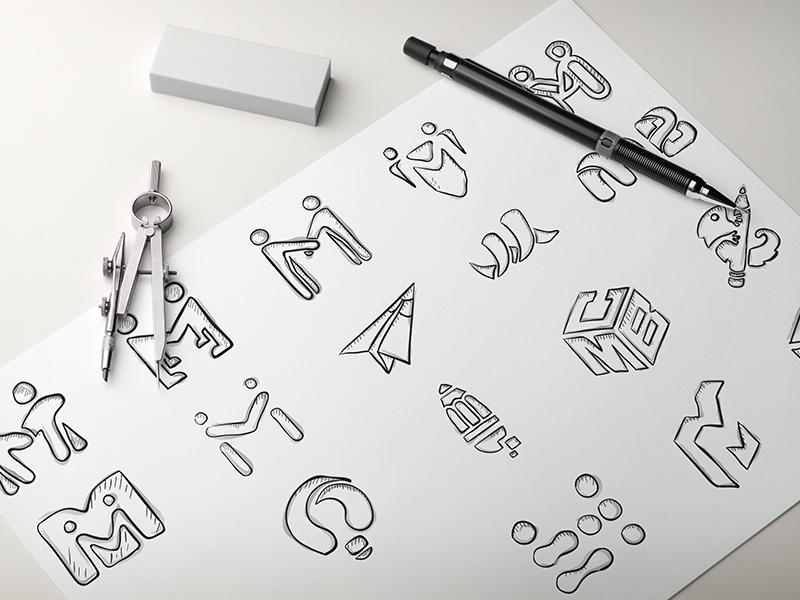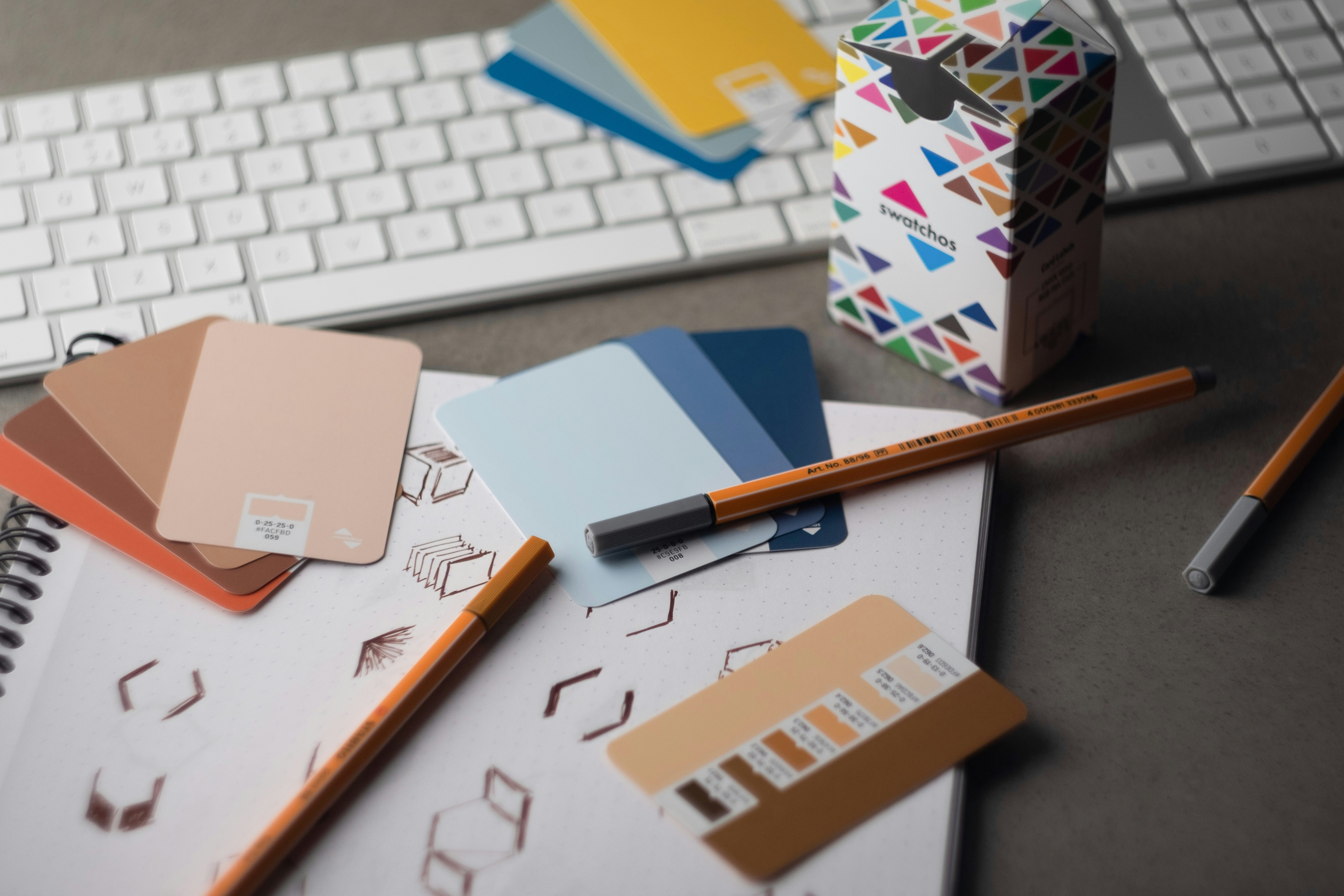Создать фирменный стиль в Интернете: Пошаговое руководство для начинающих


A brand identity is the face of your brand that helps it stand out and be recognized. Creating a unique brand identity may seem like a daunting task, but with online tools and a clear plan, it is possible to do it yourself. This guide will help you develop a professional brand identity step by step, even if you have no experience in design.
A brand identity plays an important role in shaping a brand’s identity
A clear and well-thought-out style helps create a visual connection with customers and establish trust. When your brand has a unique and consistent image, customers remember it more easily and associate it with certain values and qualities.
Creating a brand identity also simplifies communication. Consistent use of colors, fonts, and graphics allows you to maintain a unified image across all platforms - from your website and social media to packaging and advertising. A brand identity enhances professionalism and reinforces the perception of your brand as reliable and cohesive.
With online tools, you can create a unique brand identity yourself, without the need for a designer. This is especially true for small businesses and startups that need to stand out in the market and attract the attention of their audience using the resources available.
Now let's look at the step-by-step process of creating a corporate identity
Step 1: Define the main features of your brand
To create an effective corporate identity, it is important to understand what audience you want to attract and what emotions you want to evoke. Start by analyzing your target audience: who your customers are, their age, interests, values. Understanding these details helps you choose the visual elements that will be most attractive and relevant to your audience. For example, a young audience often responds to bright and energetic images, while a conservative audience — for restraint and professionalism.
Step 2: Find Inspiration
Start by searching for ideas on platforms like Pinterest and Behance, where you can see examples of logos, color schemes, and other design elements. Diving into the diversity of styles and approaches can give you a hint as to how you want to present your brand.
Also check out Nikolay Ironov's portfolio portfolio: his examples inspire with original and modern solutions, allowing you to look at style creation from a new angle. Look for elements that resonate with you so you can use them in your branding.
Step 3: Choose a color palette
Colors are a powerful tool for conveying emotion and creating recognition. With Nikolay Ironov’s AI-powered neural network, you can explore a variety of palettes that match your brand’s personality and evoke the right associations.
- Choose a color scheme: Use special tools to select a palette based on the mood your brand should convey. For example, pastel tones can create a sense of tenderness and tranquility, suitable for brands in the health and wellness industry. Bright shades, on the contrary, will bring energy and dynamism — a good choice for youth brands and startups.
- Psychology of color: Pay attention to the meaning of colors. Green is associated with nature and tranquility, blue symbolizes stability and trust, and red is passion and energy. Ironov will help you choose combinations that are not only aesthetically pleasing, but will also be the most effective in creating the desired associations in customers.
Step 4: Choose a font and create a logo
A font is not just text, but an important element that influences the perception of a brand. The right choice of font can change the character of a logo: try to imagine a children's brand with a heavy, strict font - the associations will not be childish at all. Experiment with different styles to see how font affects emotions and perception.
Step 5: Create additional identity elements
Not only logos, but also other graphic elements such as business cards, patterns, Social media covers and Telegram channels. They help the brand be recognizable and create a holistic image on all platforms. Additional elements, such as icons or textures, make the brand style more expressive. A brand associated with nature can include leaf or water motifs, and a business with a professional style - strict geometric patterns.
Step 6: Collect the corporate style in a brand book
If you want to build a corporate style with a future-proof foundation, be sure to create a brand book. This is a guide of sorts that outlines all the visual and stylistic elements of the brand to maintain a consistent style.
- Color palette: Specify the exact color codes (RGB, HEX, or CMYK) for each shade. This is important to maintain a consistent style across all materials.
- Fonts and typography: Determine the fonts, their sizes, and styles (such as bold or italic) that can be used for headings, body text, and secondary elements. This will make the texts recognizable and unified.
- Logo and rules for its use: Show the main logo and its possible variations (for example, monochrome or simplified for small formats). Describe how and where it can be used, and also give examples of incorrect use to avoid distortions.
- Additional elements of identity: If you have corporate icons, patterns or textures, include them in the brand book with instructions for use. This will create additional opportunities for creative solutions in marketing materials.
- Tone and style of communication: If your brand has a certain tone (for example, friendly or professional), describe how the messages should be structured and what phrases or words are best to use to communicate with the audience.
Step 7: Use Ironov to create a unique logo
If, after reading this far, you realized that creating a corporate identity yourself is a must-have — not your option, contact Nikolay Ironov. This service based on artificial intelligence will help you create a unique logo with minimal effort.
Nikolay Ironov's neural network takes into account the specifics of your brand, selects fonts, colors and shapes, and also offers several options so that you can choose the best one. This approach does not require complex design skills and ensures that the logo will immediately fit into your corporate style.
Step 8: Integrate the logo and style into materials
Once your brand identity and logo are created, it’s important to incorporate them into all your marketing and corporate materials. Use your new logo and style across your website, social media, advertising campaigns, packaging, business cards, and even internal corporate documentation. This will create a unified and recognizable visual image for your brand, reinforcing its identity.
Adapt your logo and elements to different formats and resolutions so that each element looks crisp and professional, whether on large banner ads or small icons on mobile devices. This helps your brand look consistent across all platforms and improves customer perception of your company.
Creating a brand identity online is a simple and accessible process if you follow this step-by-step plan. With some tools and a little inspiration, you can develop a brand identity that will make your business stand out and attract customers.


